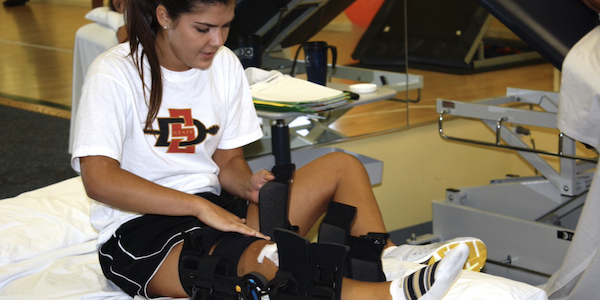

Know & GO REWIND | ACL Tears And Recovery
Health & FitnessLEVELUP INSIDERSNewsTicker July 12, 2023 Chace Bryson 0

Q&A: Renown Orthopedic Surgeon Dr. Semon Bader Answers Our Questions On ACL Tears, The Recovery Process And Prevention Methods
This is an edited transcript from our 2022 Know & GO Podcast series featuring physicians and trainers from Golden State Orthopedic & Spine.
For our second ever episode of the Know & GO Podcast last spring, we were joined by Dr. Semon Bader — a recognized expert in ACL tears and treatment.
Dr. Bader is a Bay Area native who majored in neurobiology, physiology and behavior at UC Davis before completing medical school, and then his Orthopedic residency at Harbor UCLA Medical Center. He then completed a one year fellowship in sports medicine at the Cleveland Clinic Foundation, and while there, worked as a team physician for various high schools and Cleveland State University.
Bader was also part of the medical team for Cleveland’s three professional sports teams. He returned and settled with his family in the East Bay, where for the last five years, he served as the chief orthopedic surgeon at Contra Costa Regional Medical Center in Martinez. He’s a nationally recognized expert on the treatment of knee disorders and ACL reconstruction.
SportStars: Tell us a little bit about your passion for sports medicine and working with young athletes. What’s kind of led to your hyper focus on knee injuries?
Dr. Bader: Well, I enjoy working with young people and young athletes. I grew up a pretending athlete, and I remember getting injured, and that was my introduction to Orthopedics. And it’s been kind of a lifelong interest of mine to be involved in sports medicine, and be involved in helping athletes and adults alike get back to doing the things they enjoy.
SportStars: So maybe let’s start with the basics. Most sports fans have likely heard of the dreaded knee injury that results from tearing one’s anterior cruciate ligament, or ACL. But perhaps you can share the basic science behind it, and then start with what types of athletes that are most prone to this type of injury.
_______________________________
CONNECT WITH US:
Follow SportStars on Twitter & Instagram | Like us on Facebook | Subscribe!
_______________________________
Dr. Bader: Yeah, so typically people injure their ACL when they try to land or cut. They’re called pivoting mechanism injuries. And what happens is the tibia or the shin bone shifts underneath and tears the ACL. Athletes that play cutting sports or jumping sports like basketball or soccer, or collision sport athletes where they can get hit in an awkward position like football, are more prone to tearing their ACL.
Often female athletes tend to be at higher risk because of having a wider pelvis. Their knees tend to be a little bit more knock kneed. They don’t have the same muscle strength to help protect their knees. They may, in some instances, not have the same coordination to be able to protect themselves. But it happens both for men and women.
SportStars: You mentioned collision sports, but we also hear a lot about non-contact tears. Are the tears basically the same whether they happen as non-contact or in a collision? Or do you see varying types of them based on how they occur?
Dr. Bader: No, actually they’re different. Non-contact are actually more concerning in terms of risk for re-injury because it tells you that that person’s mechanics and how they’re built is predisposing them to the injury. So whenever I hear someone went to just turn and cut and hurt their knee, I get more concerned that they’re at more risk.
The freak accidents, where someone’s standing there or trying to cut and someone hits their knee — albeit those can be a little bit more problematic because they can do more damage to other parts of their knee — they cause less concern. Obviously, they’re still concerning, but maybe you have less of a concern that they’re going to re-injure themselves doing a particular pivoting mechanism or trying to cut and land.
The good news is the injuries where someone gets hurt trying to cut and pivot, especially in females, those seem to be the ones that we can do the most in terms of prevention. So females have been shown to benefit the most from injury prevention rehabilitation, or injury prevention training. So there’s some good news at least there.
SportStars: So you kind of led us to our next question there. What are prevention steps that young athletes can take to improve their chances of avoiding these types of injuries?
Dr. Bader: There are specific protocols and training methods that are done in specialized centers where they educate the athlete in terms of mechanics. So certain landing and cutting mechanics, certain mechanisms or mechanics where your knee buckles inward. We want to train athletes to avoid those kinds of mechanics, strengthening, proprioceptive training.
And I think it even goes beyond that when you’re talking about knowing your sport, being in the best physical conditioning possible so that you don’t get fatigued and get yourself hurt because you just didn’t have the energy or the strength to protect yourself. So there’s many layers of this that can be addressed, and I think it really starts with working with the right professionals to help prevent these injuries.
SportStars: We’ve also read a little bit about how you guys use video and motion analysis to help determine if a certain athlete is more susceptible to an ACL tear. How does that work and how easy is it for young athletes to get access to that?
Dr. Bader: We’re working on trying to optimize these things. I think it’s a work in progress. But, yeah, I think the best case scenario is trying to get athletes in, getting them evaluated, videotaped, evaluating their mechanics, and then identifying the higher risk individuals and really focusing in on those people.
SportStars: Once an athlete gets the bad news, and now they know that they’ve suffered this tear, what’s your first steps as far as what you lay out for them for their treatment and their rehab?
Dr. Bader: Yeah, like you said, I think first the bad news is you’ve torn your ACL. There may be a meniscus tear or something else. And so we need to come to grips with that and address the concerns and anxiety associated with that. The good news is these are treatable problems. The large majority of patients who are motivated and want to get back to their sport, can get back. The goal is to get athletes back within about a year or so.
We have different types of (muscle) grafts that can be used to rebuild people’s ACL, but essentially it comes down to you have to rest, get the swelling down, get the range of motion back, and then when the time is right, we reconstruct the ACL.
SportStars: When dealing with teenage or high school athletes, what is that process like for you as far as just explaining that injury to them, and just kind of getting them mentally prepared for the road that they’re going to face to get back to their sport?
Dr. Bader: Good question. I think part of it is just understanding what the injury is, and then talking about what we can do to get them treated. That involves a surgery. It involves usually taking a piece of their own tissue, typically the patellar tendon tissue, to rebuild their ACL.
It’s done as an outpatient procedure. You go home after surgery, and you begin rehabbing pretty much right away. You do need to understand that it takes time. It takes time first to get your range of motion back, which usually takes a few weeks. Then it takes a couple of months to start getting the strength back. The goal is usually around three and four months for people to start running.
Usually for people, some of the anxiety gets resolved a little bit when they hear three months and four months, because sometimes people think you’re just incapacitated for an entire year. That’s not the case. One goal is around three to four months we start getting people jogging and starting to get their muscle back and their function back. So that’s one threshold right there. Around six months, you can get a little bit more intensive in terms of your rehab with the (return-to-sport) goal at about one year.
If everything is progressing well — there aren’t any setbacks and they’re meeting their goals — around one year is about when we shoot for getting athletes back on the field or the court. Now, could you try to get it back sooner? Could you try to get back at six months? Yes, you can. Six months is a very accelerated rehab program. People have been shown to have increased risk of re-injury when they go back at six months. So we have learned over the years, if we shoot for six months, it’s with a higher risk for re-injury. If we shoot for one year, then the risk is lower.
And then there’s people in between, someone whose sport starts at nine months, so we shoot for nine months — while understanding that they’re not maybe as low-risk as someone who waits a little bit longer. But it’s not just time. It’s about the work that’s put in. It’s about how conditioned they are, how strong they are, how they’ve demonstrated how functional they are to the therapist.
So it’s a holistic approach. It’s a holistic process with multiple people involved helping to make the decision: The therapist, the doctor and the patient.
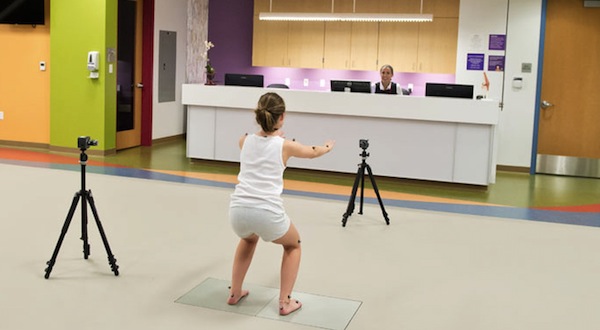
SportStars: With those who’ve torn their ACL at a greater risk (of re-injury), how do you change the prevention methods to help them to try and avoid tearing it again?
Dr. Bader: Yeah, I think it kind of goes back to what we talked about in terms of not rushing back, making sure you’re ready, and then implementing the prevention protocols and rehabilitation that we would do for someone who’s never torn their ACL. We apply those same things to the individual who injured their ACL.
Now, some of the things that we’ve learned, is that people who tear their ACL are at even a little bit higher risk of injuring the other knee. So that’s why it’s so important to have the confidence to be able to use your knees — so that you’re not compensating and putting more pressure on the other knee.
SportStars: Our last question here is, what’s the biggest piece of advice that you have for young athletes who are in sports and want to avoid the risks of this injury?
Dr. Bader: I think it starts with just getting in shape. You’ve got to be in shape when you play sports. You don’t want to go out there and get involved in a very intense game or practice when you’re not in shape. So that’s what I tell my athletes. That’s what I tell my kids who play sports.
Number two is, if you do get hurt, take the time you need to get yourself right. And if it’s something minor, then just take the time you need to get your knee right and strong so you don’t hurt it more. And if you do get hurt, you’ve got to see someone. You’ve got to make sure you get your knee looked at. Especially If you ever have an episode where you planted and felt a pop in your knee, then your knee swelled up.
It is, believe it or not, a commonly missed diagnosis. So I do see kids often coming in with missed ACL tears. So you want to make sure you see your doctor; get it evaluated. If there’s any concern, get an MRI of your knee.
I want people to be out there and enjoy themselves. ACL tears are common, but in the grand scheme of things, they’re not that common. I think there’s the small minority of patients that get hurt, but when it does happen and they need the right care, we’re here to help.

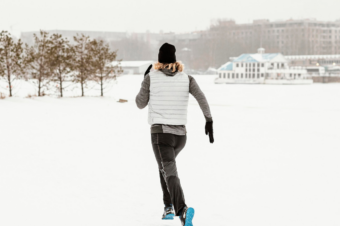
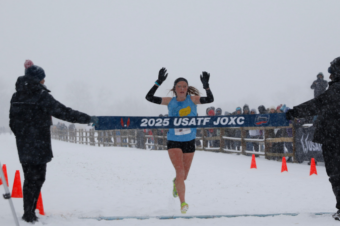
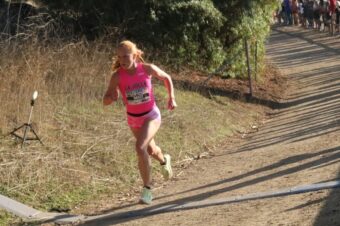
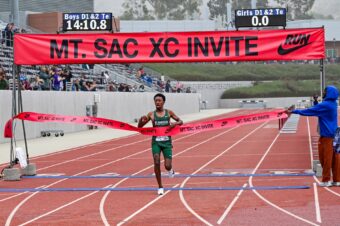

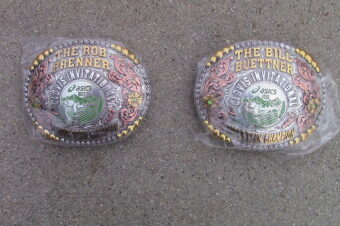
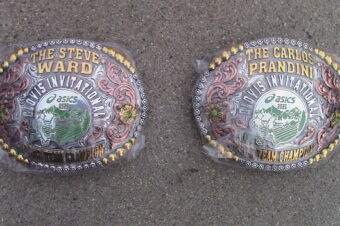
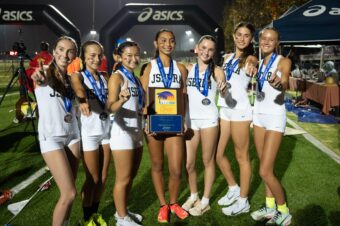
No comments so far.
Be first to leave comment below.